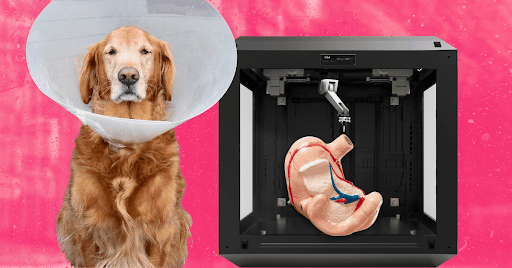Lithuanian startup Vital3D wants to revolutionize human organ transplants — but first, they’ll need to nail some dog Band-Aids.

Bioprinting could be the future of medicine, according to CEO Vidmantas Šakalys, who imagines viable 3D-printed organs could be developed as soon as 10 years from now.
But to get there, per The Next Web, Vital3D will have to prove its bioprinting concept works and make some money along the way.
Enter wound patches for dogs.
What now?
Vital3D is doing some sophisticated work, using lasers to deposit living cells and biomaterials in precise 3D patterns, essentially printing biological tissue.
Their first product, VitalHeal, is a bioprinted patch built for man’s best friend that can seal dogs’ wounds and accelerate skin regeneration.
An early version of its patch will be tested on British and Lithuanian pups this summer and Vital3D expects these big results as testing expands:
- Cutting healing time from 10-12 weeks to 4-6 weeks
- Reducing infection risk from 30% to under 10%
- Slashing vet visits from 8 to just 2-3
- Costing a bit less than $350 per patch (but compare that to a four-digit vet bill).
Cool, but there’s a bigger picture here
This isn't really about dogs, though who would ever be upset about helping out those little angels?
- Pet medtech also happens to be a brisk business — the animal wound care market is projected to grow from $1.4B today to $2.1B by 2030.
Dog patches are the startup’s commercial stepping stone to fund its grander vision of transplantable 3D-printed organs.
If they can get there, they'll find a staggering transplant bottleneck: Currently, fewer than 10% of patients needing transplants receive them each year. (In the US alone, 90k people are waiting for kidneys.)
Reality check: Huge scientific hurdles remain for Vital3D, like forming intricate networks of blood vessels in intricate networks and replicating the multitude of cell varieties found in many organs — but that’s why they’ve wisely spotted themselves a whole decade-plus to sort it out.
Health

